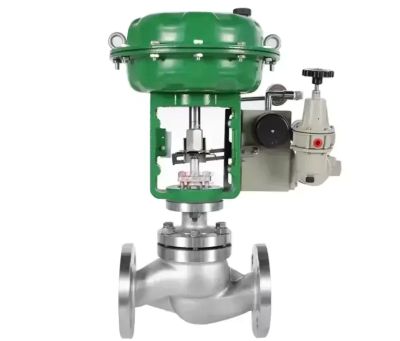


Pneumatic Control Valves: Principles, Applications, and Maintenance
Pneumatic control valves are vital components in industrial automation systems, extensively used across petroleum, chemical, power generation, and metallurgy sectors. These China Control Valves manage critical process parameters—including flow, pressure, temperature, and fluid properties—by using compressed air as a power source. Operated through actuators, positioners, solenoid valves, and other accessories, pneumatic control valves receive signals from automation systems to regulate fluid movement with high precision.
This article delves into the working principles, types, applications, maintenance practices, and common issues associated with pneumatic control valves.
The operation of a pneumatic control valve hinges on its actuator and valve body. When a control signal is sent from the system (typically 4–20 mA or 0.2–1 bar), the valve positioner interprets it and adjusts the actuator accordingly. The actuator generates the force needed to move the valve stem, thereby adjusting the valve’s opening to control the flow of the process medium.
Actuator: Converts control signals into mechanical motion.
Valve Body: Controls medium flow in the pipeline.
Positioner: Ensures precise positioning of the valve based on the control input.
Pneumatic control valves are classified by design, structure, and function. Common types include:
Single-Seat Control Valve
Compact and widely used
Ideal for low- to medium-pressure systems
Sleeve (Cage-Guided) Control Valve
High sealing performance
Suitable for high-pressure, high-flow applications
Three-Way Control Valve
Allows flow splitting or mixing
Common in heat exchange and cooling systems
Point Control Valve
Designed for micro-flow control
Used in precise dosing and lab-scale processes
These valves are essential in industries where precision, reliability, and speed are critical:
Oil & Gas: Regulate flow in pipelines and refinery units
Chemical Processing: Maintain stable reaction conditions
Power Plants: Manage steam and water distribution
Metallurgy: Control furnace pressure and cooling systems
Water Treatment: Regulate flow and pressure in filtration and distribution networks
Pneumatic control valves use different types of actuators, including:
Solenoid-Operated Valves:
Electrically actuated, commonly used for remote or automated switching.
Air-Operated Valves:
Powered directly by compressed air, ideal for explosive or power-sensitive environments.
Manually Operated Valves:
Include levers or wheels for manual operation in low-automation systems.
Even high-performance pneumatic valves can experience operational problems. Below are typical issues and their solutions:
Mechanical Vibration
Cause: Loose fit between valve stem and sleeve
Solution: Reduce stem-sleeve clearance or hard-surface the sleeve
Noise and Cavitation
Cause: Turbulent flow or pressure drop
Solution: Use low-noise trim or anti-cavitation design
Natural Frequency Resonance
Cause: Resonance of spool or internal parts
Solution: Re-engineer components or add damping elements
Spool Instability
Cause: Damping system misconfigured
Solution: Adjust damping coefficients or install dynamic stabilizers
Slow or No Valve Response
Cause: Blocked air lines or faulty positioner
Solution: Inspect and clean air supply and positioner
Air Leaks
Cause: Worn seals or gaskets
Solution: Replace damaged components and check fittings
A pneumatic valve’s control cycle involves the following steps:
Signal Reception
The control system sends a signal to the valve positioner.
Positioner Adjustment
The positioner directs compressed air to the actuator diaphragm.
Valve Movement
The actuator moves the stem based on signal pressure.
Spring Return
If air pressure drops, internal springs return the valve to its fail-safe position.
Proper maintenance ensures optimal performance and extended valve lifespan. Key practices include:
Lubrication: Apply suitable lubricants to reduce friction and wear.
Drainage: Remove accumulated condensate to prevent corrosion.
Inspection: Regularly check seals, diaphragms, and actuator components.
Cleaning: Keep the valve body and internals free from dust or debris.
Testing: Perform functional tests for response time, pressure handling, and accuracy.
Pneumatic control valves are indispensable tools for maintaining accurate and responsive control in industrial process systems. With a range of types and configurations, they offer flexible solutions for flow, pressure, and temperature regulation. By understanding their principles, components, and maintenance needs, engineers and operators can ensure these valves operate reliably and efficiently.
For industries focused on automation, safety, and process optimization, investing in well-maintained pneumatic control valve systems is essential for long-term success.Know more about Google SEO Directory
